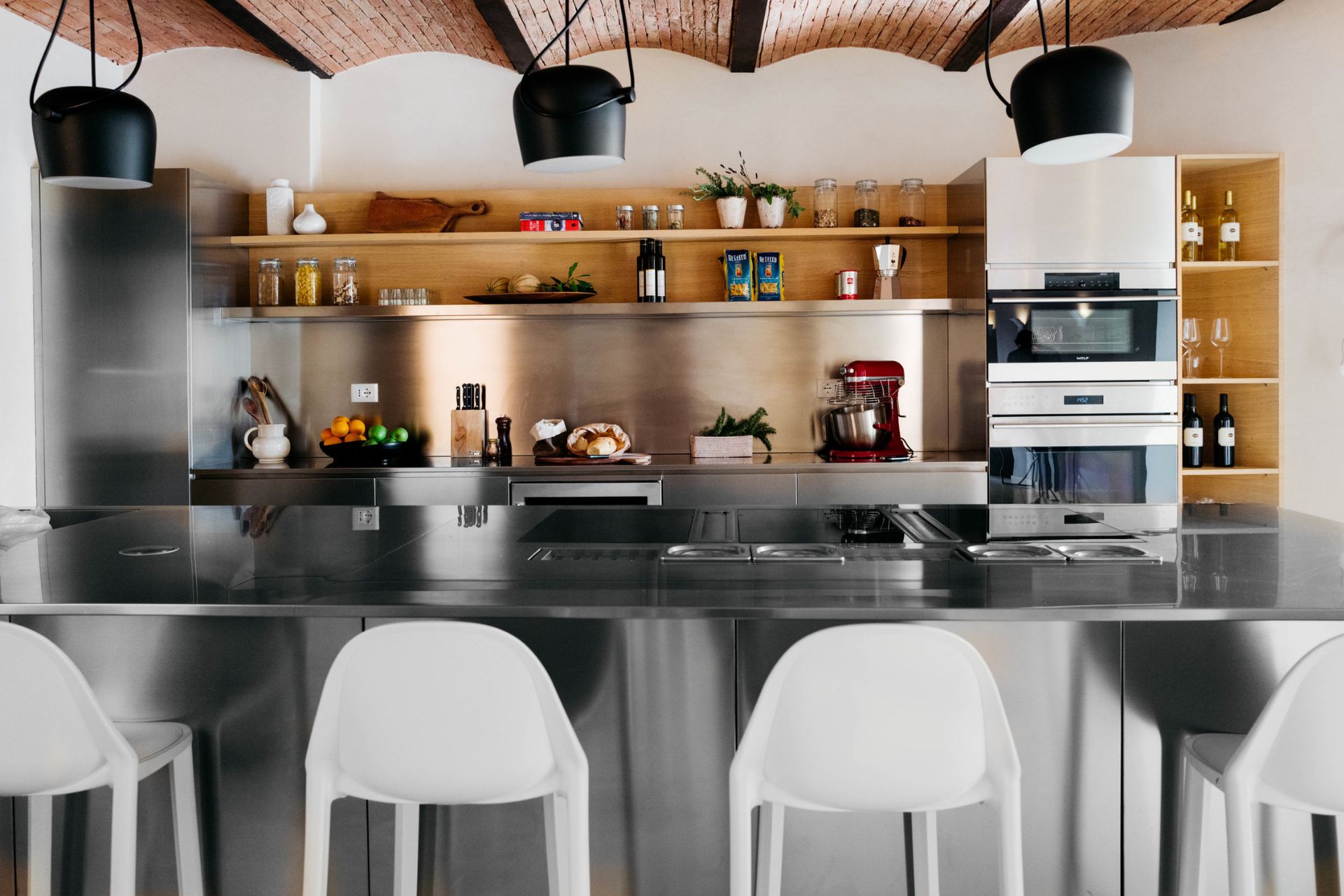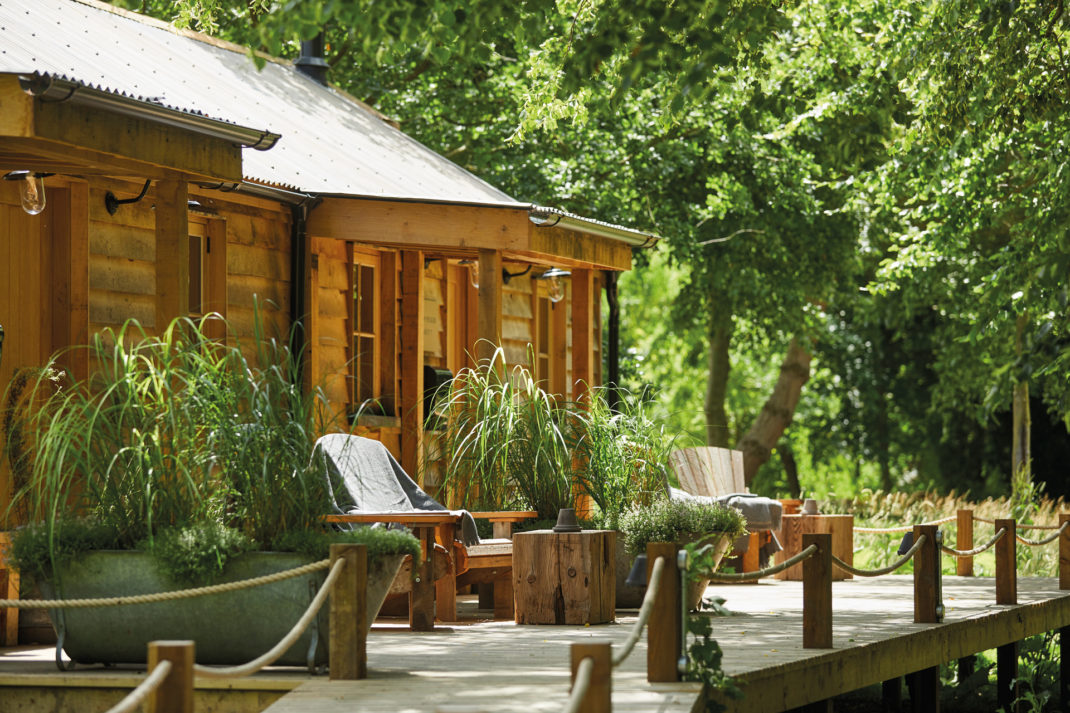
Inside A Magical Cliffside Retreat In Capraia, Italy
By
10 months ago
A hidden gem off the Tuscan coast
Thinking of heading to Italy? Sarah Siese explores Capraia, a spectacular island off the coast of Tuscany.
Review: Forte San Giorgio, Capraia

Sam Riva
Relatively unknown, and perhaps the most rugged jewel in the Tuscan Archipelago, I sense that compared with the rest of the Mediterranean, time has slowed here on Capraia. The rhythm of the sun and sea still sets the pace; and with almost no vehicles – the island has only 800 metres of tarmac connecting the port and hilltop village – life on foot or bicycle retunes the brain like a synoptical brake.
Approaching Capraia by ferry, having departed from the Tuscan mainland town of Livorno three hours before, first impressions are dominated by an imposing silhouette of its ancient fortress, Forte San Giorgio. Its two bastions, curtain and wall that surround the rocky cliff stand sentinel against the azure backdrop of the Mediterranean waters. It completely dominates the small strip of harbour buildings below.
The fortress channels all the innocent vibes of Dodie Smith’s I Capture the Castle meets the summer partyness of Mamma Mia, with more than occasional hints of Pappion. In fact, this island’s saving grace is perhaps that until 1986, it was a prison island and closed to all visitors. The Greeks called it Aegylon, or land of sheep, but Capraia is also an old Etruscan word: Kapra, meaning stony land.
Meandering through the quiet cobbled alleyways just below the fortress, I allow the whispers of the wind to guide my inquisitiveness. The eponymously named Capraia village, perched high above the harbour, is a cluster of pastel Dolly-mixture-coloured houses glowing warmly in the golden hour of the setting sun. Narrow, winding streets beckon exploration, each turn revealing a new vista of the sea or a courtyard garden filled with sweet scented jasmine, lemon trees, or a drunken palate of bougainvillea cascading over roofs and walls. The essence of past and present meld thinly together, in an atmosphere that is both timeless and profoundly in the moment. The effect is a kind of visual intoxication that makes me feel giddy on life.
Moving further along the peninsula, away from any buildings, the air becomes fragrant with the mingling aromas of the Mediterranean maquis, a rich tapestry of rosemary, myrtle, and wild herbs that blanket the island. Down in the port, next to a popular gelateria and handful of bars and restaurants, a cheese maker has thought to use these herbs to encase her goat’s cheese with helichrysum flowers – resulting in irresistible prettiness and flavour that’s won her a gold medal.

Cerruti Draime
It’s easy to understand why this island, home to just 400 residents, with its wild, untamed beauty, has become a sanctuary for those seeking a deeper connection with nature, offering honest respite from the pace of modern life. Partying is done discreetly, and nightlife is more about stargazing than cocktails.
The island has stories. Vertiginous cliffs – with perilous concaving drops –would have warned off all, except possibly James Bond or that Man from the Cadbury’s Milk Tray advert. Down at sea level, secluded coves line the coast and speak of a land shaped by both human endeavour and mother nature.
Forte San Giorgio was built by the Genoese in the 16th century, in a time when it was a crucial defensive outpost against pirates. Right up until the mid-17th century, the inhabitants lived within its walls, which was then used as a military facility until the mid-19th century. Today’s fort-life is a different story. Painstakingly restored and re-imagined as a fantastical family home with a maze of steps, courtyards, and gardens – the decade-long transformation delivers all the luxuries of modern living with tasteful subtlety. A choice of mini apartments fans out from the central piazzetta, providing 11 ensuite-bedrooms with various living spaces, kitchens, and private terraces, as well as two infinity swimming pools.
The family, who spend several weeks of the summer here each year, have favoured durable local natural materials like island stone and Carrera marble for floors and balustrades, mixed with rosewood and teak furnishings to create a classy but neutral finish.

Cerruti Draime
Walking the island, the trails – often no more than rough goat tracks – lead through a range of landscapes from verdant valleys to stark volcanic hillsides, and stepped hillsides covered in vines. It’s also haven for birdwatchers, with peregrine falcons and shearwaters soaring above, while the ground is alive with the rustle of lizards and the occasional glimpse of a wild goat, from which the island takes its name.
The sea around Capraia is a kaleidoscope of blues and greens, with clarity that reveals a vibrant underwater where shoals of fish dart among the rocks and the seafloor is dotted with the remnants of ancient shipwrecks. Along the eastern side of Capraia, shortly before Cala Rossa, a large heap of rocks gives way to a deep seabed – one of the most spectacular diving areas on the island. It’s an oasis bursting with sponges and coral-like organisms that illuminate in torch light, while pelagic hunters such as groupers, amberjacks, and barracudas dart past into the deeper blue. Upon surfacing, divers are treated to a ringside view of the volcanic crater Cala Rossa – a rusty umbilical cord that gave birth to the island.
A change of character occurs in the evening, when the sky, ablaze with oranges and pinks, casts a magical glow over the landscape. The stillness is profound, broken only by an occasional bark or distant owl, and the lapping of waves against the shore. It’s a time for reflection to allow the day’s experiences to settle. Whether you come for the hiking, history, or simply to lose yourself in the island’s tranquil embrace, Capraia promises discovery and a deep, abiding connection with the timeless rhythms of the earth and sea. Here, amid the raw beauty of the Tuscan Archipelago, you find not just an escape, but a profound sense of just being alive.
BOOK IT
Forte San Giorgio offers seven nights’ exclusive use self-catering for 12 from £24,950, or for 20 from £33,270 fsgcapraia.com. To reach Capraia, fly to Pisa or Florence, then take the ferry from Livorno. For diving, contact capraiadiving.it.
Sarah’s return flights to Pisa had a carbon footprint of 453.5kg CO2e. ecollectivecarbon.com






